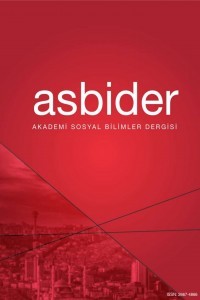BİR ŞEHRİN TARİHİNİ YAŞAMAK: BELFAST MÜZELERİ
Belfast, 19. yüzyılda dünya lideri sanayi başkenti olarak anılırken
20. yüzyılda şiddetli etnik çatışmaların merkezi olmuştur.
2000’li yılların başına kadar kanlı saldırıların yaşandığı kentte
Katolik ve Protestan toplulukların var olma ve üstün gelme mücadelesi
farklı alanlarda hala devam etmektedir. Yapılan araştırmalar,
siyasilerin ve çeşitli alanlardan kuruluşların arabuluculuk
faaliyetlerinin kabul görmediğini, toplum nezdinde ise
inandırıcılıklarını yitirdiğini söylemektedir. Böyle bir ortamda
müzeler ve sergileme stratejileri, şaşırtıcı biçimde toplumsal
uzlaşma için dönüm noktası olmuştur. Bugün Belfast müzeleri,
uzak ve yakın tarihi nesnel bir vizyonla halka anlatmayı görev
edinmiştir. Bu anlatım, eserden ziyade tamamen ziyaretçiyi
ve onun dünya görüşünü hedef alan bir stratejinin parçasıdır.
Yeni müzecilik anlayışı Belfast’ta açıkça hem toplumsal uzlaşının
gelişmesine katkıda bulunmakta, hem de çatışmaların
gölgesinde kalmış kent tarihinin zengin öğelerini ön plana
çıkarmaktadır. Bu doğrultuda, çalışmada Kuzey İrlanda’nın
başkenti Belfast’ta yer alan müzelerden Ulster Halk ve Ulaşım
Müzesi (Ulster Folk and Transport Museum), Ulster Müzesi
(Ulster Museum) ve Titanic Belfast ele alınmaktadır. Araştırma
kapsamında önce Kuzey İrlanda ve Belfast tarihine ilişkin kısa
bir bilgilendirme yapılmıştır. Sonrasında kentin tarihini doğrudan
referans alan müzelerin, ziyaretçisi ile kurduğu iletişim ile
nesneden çok özne odaklı sergileme usulleri incelenmiştir. Bu
sergileme teknikleri ile yaratılan etkinin ziyaretçi üzerindeki etkileri,
müzelerin hedeflerine ulaşıp ulaşmadıkları ile müzecilik
açısından bir yenilik olup olmadıklarına dair değerlendirmede
bulunulmuştur.
Anahtar Kelimeler:
Belfast Müzeleri, Kent Tarihi, Kültürel Miras, Sergileme
Living the History of a City: Belfast Museums
While Belfast was remembered as a world-leading industrial
capital in the 19th century, it was the centre of violent ethnic
conflict in the 20th century. The struggle of Catholic and
Protestant communities to exist and prevail in the city, where
bloody attacks were experienced until the beginning of the
2000s, still continues in different areas. Researches show
that the mediation activities of politicians and organizations
from various fields are not accepted, and they lose their
credibility in society. In such an environment, museums and
exhibition strategies surprisingly become a turning point for
social reconciliation. Today, Belfast museums take a mission
to explain the distant and recent history to the public with an
objective vision. This narrative is part of a strategy that targets
the visitor and his / her worldview rather than the artefact.
The new understanding of museology clearly contributes to
the development of social consensus in Belfast and highlights
the rich elements of the urban history, which have been
overshadowed by the conflicts. In this direction, the study deals
with the Ulster Folk and Transport Museum, Ulster Museum
and Titanic Belfast, which are among the museums located in
Belfast, the capital of Northern Ireland. Within the scope of
the research, firstly, information was given about the important
periods of Northern Ireland and Belfast history by the author.
Subsequently, the communication of the museums, which take
direct reference to the history of the city, and the exhibition
methods that focus on the visitor rather than the artefact were
examined. The researcher evaluates the effects of the effect
created by these exhibition techniques on the visitors, whether
the museums have achieved their goals and whether they are a
novelty in terms of museology.
Keywords:
Belfast Museums, Urban History, Cultural Heritage, Exhibition.,
___
- BARDON, J. (2005) A History of Ulster, Belfast: The Blackstaff Press.
- BENNETT, T. (1996). The Exhibitionary Complex, in Thinking about Exhibition, ed. R. Greenberg, S. Nairne ve B. W. Ferguson. New York: Routledge, 81-112.
- BİELENBERG, A. (1994). Industrial Growth in Ireland; c. 1790-1910. London: UMI Publishing.
- BOAL, M. O. (2012). Form Following Function at Titanic Belfast. https://www.researchgate.net/publication/260099227_Titanic_ Belfast. [erişim tarihi 20 Mayıs 2021].
- COOHILL, T. P. (2008) Ireland. A Short History (new rev. ed.), Oxford: Oneworld Publications.
- CROOKE, E. (2001). Confronting a Troubled History: which past in Northern Ireland’s museums? International Journal of Heritage Studies 7(2), 119-136.
- DIXON, P. (2008) Northern Ireland. The Politics of War and Peace. Basingstoke vol. 2. New York: Palgrave Macmillan.
- JONES, J. (2010). “Belfast’s Ulster Museum and the trouble with the Troubles”, The Guardian, 19 May 2010. http://www.guardian. co.uk/artanddesign/jonathanjonesblog/2010/may/19/museums-northern-ireland-troubles retrieved on 18 Feb 2011.
- LEONARD, J. (2008). Towards an Oral History of the Troubles: Conflict at the Ulster Museum, in What Made Now in Northern Ireland, ed. R. Froggat. Belfast: Northern Ireland Community Relations Council, 125-34.
- MONAGHAN, N. T. (2000). The National Museum of Ireland. in Buttimer, in The heritage of Ireland. ed. N., Rynne, ve H. Guerin,. Cork: The Collins Press, 404-412.
- NIC CRAITH, M., Kockel, U., and Johler, R. (2008) Everyday culture in Europe: approaches and methodologies, Aldershot; Burlington VT.: Ashgate.
- OWEN, T. M. (1988). The Role of a Folk Museum, The Use of Tradition. Essays presented to G. B. Thompson, ed. A. Gailey. Newry: W. & S. Magowan for HMSO/Ulster Folk and Transport Museum, 75-84.
- RANELAGH, J. (1999). A Short History Of Ireland. Cambridge: Cambridge University Press.
- ROYLE, S. A. (2015). Island cities: The case of Belfast, Northern Ireland. Miscellanea Geographica, January vol. 19, No. 2, 5-8.
- SAWYER, A. (2011). National Museums in Northern Ireland, Building National Museums in Europe 1750-2010. Conference proceedings from EuNaMus, European National Museums: Identity Politics, the Uses of the Past and the European Citizen, Bologna 28-30 April 2011. ed. P. Aronsson ve G. Elgenius, EuNaMus Report No 1. Linköping University Electronic Press: 625-651.
- ISSN: 2667-4866
- Yayın Aralığı: Yılda 3 Sayı
- Başlangıç: 2014
- Yayıncı: Ankara Hacı Bayram Veli Üniversitesi
Sayıdaki Diğer Makaleler
DÜNYA EDEBİYATLARINDA RÜYA MOTİFİ: KARŞILAŞTIRMALI BİR ANALİZ
ARKTİK’TE SİLAHLANMA YARIŞI: RUSYA VE NATO
ÖKSÜZ KIZ MASALININ MAX LÜTHİ’NİN STİL ANALİZİ YÖNTEMİNE GÖRE DEĞERLENDİRİLMESİ
POSTMODERNİZM VE JEOMORFOLOJİ İLİŞKİSELLİĞİNE KUANTUM MEKANİĞİ AÇISINDAN BİR BAKIŞ
Ezgi Su DAĞABAK1, Aslı Özlem TARAKCIOĞLU
BİR ŞEHRİN TARİHİNİ YAŞAMAK: BELFAST MÜZELERİ
Umut Barış USTABULUT, Furkan BAYRAK, Yavuz Kaan KONUK
BİRİNCİ DÜNYA SAVAŞI’NIN SICAĞINDA HAFIZ HAKKI PAŞA-SÜLEYMAN NAZİF TARTIŞMASI
Ali DEĞİRMENDERELİ, Leyla DURUKAN
